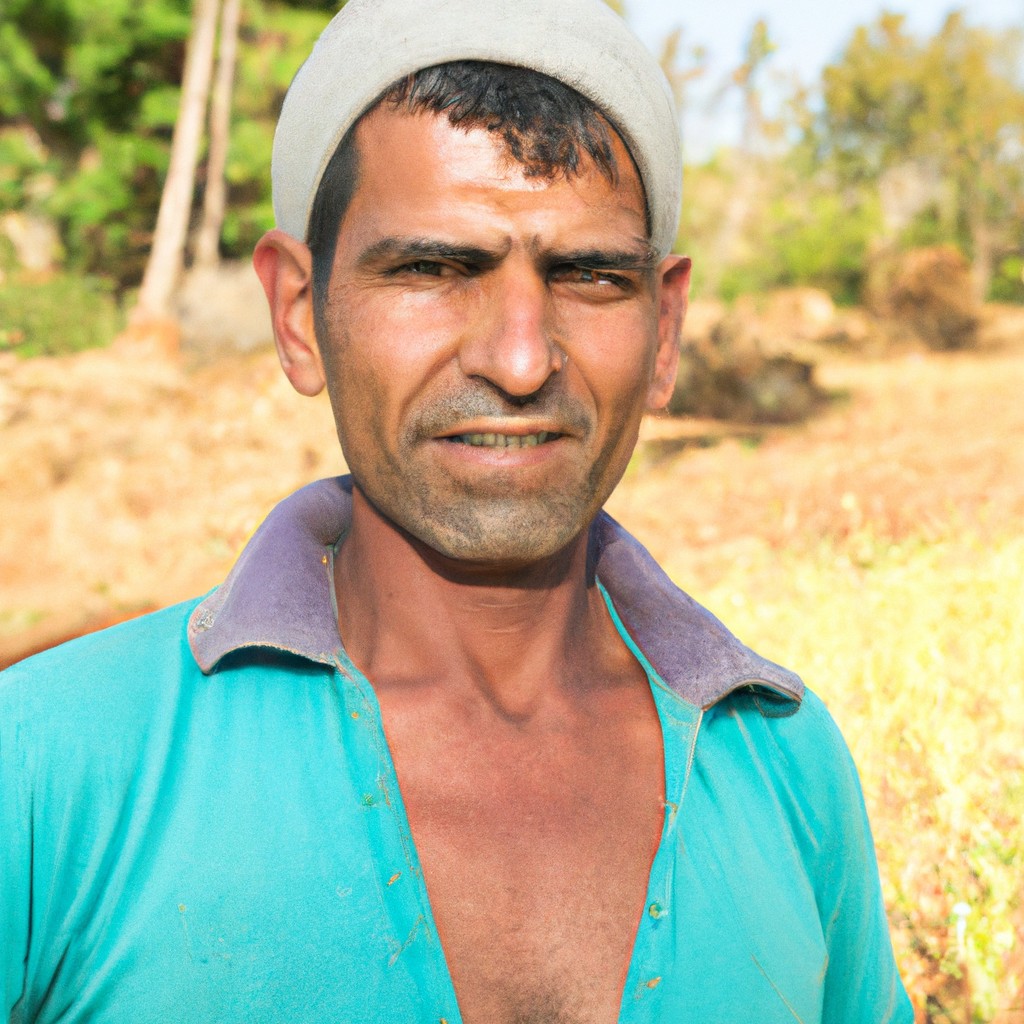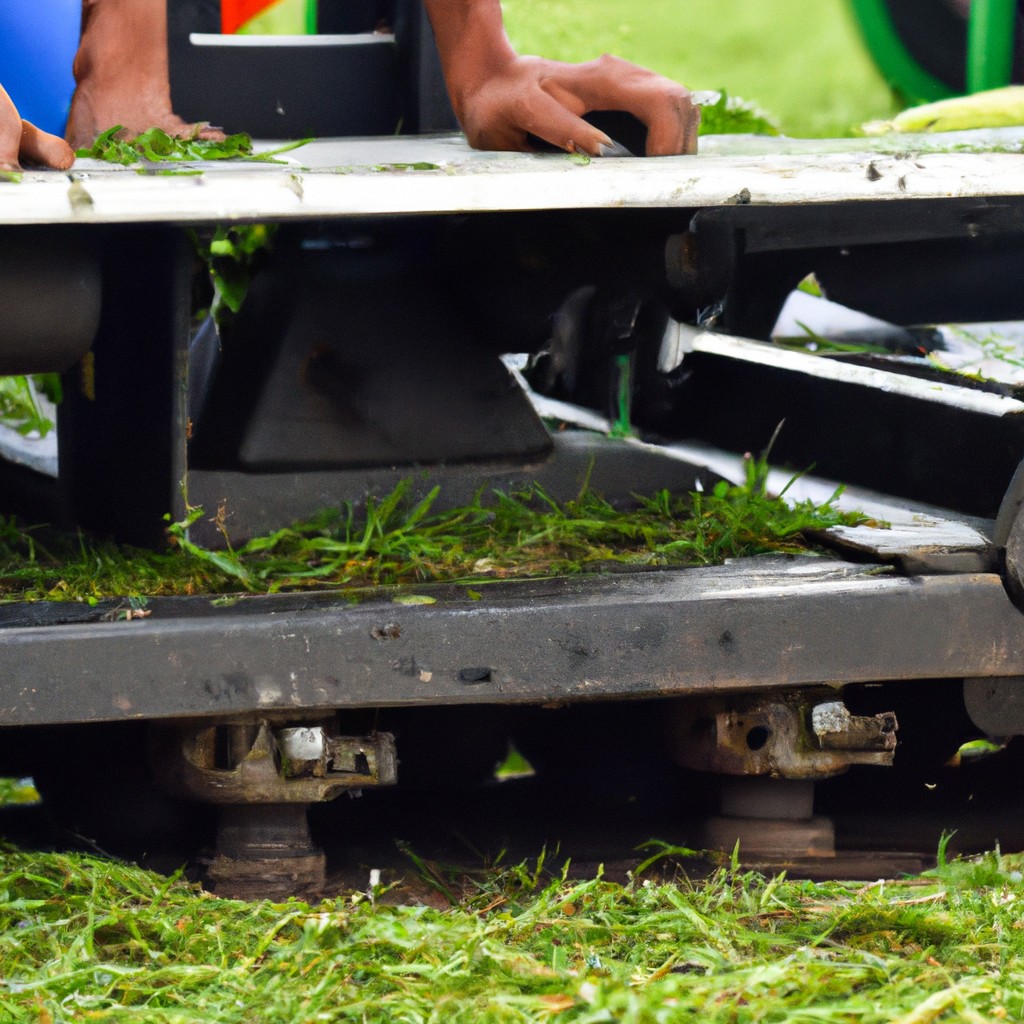Exploring the principles and practices of sustainable homestead farming can profoundly influence our food system, offering a more ecological and ethical approach to agriculture.
Sustainable homestead farming is an approach to agriculture that focuses on producing food in a way that benefits the environment, the community, and the farmer. It involves a variety of techniques, from organic farming to permaculture, aimed at creating a system that is self-sustaining, resilient, and productive.
This article will delve into the principles of sustainable homestead farming, the steps to start your own homestead, and the benefits of this farming method. Whether you’re a seasoned farmer or just starting out, you’ll find comprehensive and practical information to guide your sustainable farming journey.
Key takeaways:
- Sustainable homestead farming is an ecological and ethical approach to agriculture.
- It focuses on benefits to the environment, community, and farmer.
- It involves techniques like organic farming and permaculture.
- Benefits include lower carbon footprint, food security, and economic stability.
- Key steps include evaluating land, choosing suitable crops and livestock, and wise water management.
Look Inside:
Understanding Sustainable Homestead Farming

Sustainable homesteading is a comprehensive approach to agriculture that aims to maintain and boost the health of the whole ecosystem. It involves resource-efficient techniques including rainwater harvesting, energy production from renewable sources, and waste recycling.
The goal of this farming type is not just to grow food, but to cultivate an interdependent and flourishing ecosystem on your land. The idea predicates upon understanding the unique relationships that exist between plant species, livestock, and their environment to innovate holistic farming methods.
This way, farmers ensure that their practices foster biodiversity, soil health, and productivity while reducing any adverse environmental impact, thereby safeguarding the farm’s future resilience.
Benefits of Homestead Farming
Sustainable farming on a homestead provides myriad benefits touching on environmental preservation, health, and economic stability. Firstly, it reduces the carbon footprint by limiting reliance on chemically laden agricultural inputs and mechanized farming methods. This integrated farming approach enhances biodiversity, enabling a healthy, balanced ecosystem on your farm.
Moreover, it bolsters food security by enabling year-round production of diverse, nutrition-rich food right at home. Knowing the source of one’s food and the methods used in its production translates to healthier, chemical-free meals for the family.
Economically, it lowers dependency on commercial food systems, and in the long run, can offer potential income avenues through the sale of surplus produce.
Additionally, homestead farming promotes the conservation of traditional farming practices and reconnects us with nature, thereby offering therapeutic benefits that stem from an active outdoors lifestyle. Indeed, the concept of sustainable homestead farming goes beyond mere food production, anchoring holistic health and sustainability.
Establishing a Sustainable Homestead Farm
Your first step should be to evaluate your land. Understand its unique characteristics including microclimate, soil type, and exposure to sunlight. Utilize these features to your advantage, and plan your farm layout accordingly.
Next, choose crops and livestock that are indigenous or suitable for your region’s climate and soil. This not only promotes biodiversity but also reduces susceptibility to pests and diseases.
Also, consider integrating permaculture principles such as layered planting, and guilds, which encourage a self-sustaining ecosystem. For example, combining root crops, ground cover crops, and tall canopy crops together thanks to their different growth heights can maximize direct sunlight exposure for all.
Moreover, build the soil fertility naturally using compost, green manure, and other organic matter. This increases soil’s water retention and nutrient availability, making the land more resilient to weather fluctuations.
Lastly, manage water wisely. Learning to harvest rainwater and re-use greywater allows for better sustainability, preserving a critical resource.
Starting a sustainable homestead farm is a process of continuous learning and adapting. It’s about understanding the intricacies of nature, utilizing them to build a productive farm, and giving back to the environment in the process. It’s a rewarding journey towards a more sustainable future.
Elements to Consider for a Self-Sufficient Farming Plan
When developing a plan for self-sufficient farming, several key components should be addressed initially. The choice of crops is crucial, focusing on those with high yields and multiple uses. Consider diversifying not just among vegetables but within the vegetable family too. A mix of perennial and annual crops will help ensure year-round productivity.
Soil health is another critical factor. Implementation of regenerative practices such as composting, crop rotation, and cover crops can enhance soil fertility and reduce pest problems. A soil test can provide useful information about nutrient deficiencies and pH balance.
Water management is another essential component. Techniques such as rainwater harvesting and drip irrigation can ensure steady water supply but minimize water waste.
Space planning becomes extremely crucial on a homestead. Creating an efficient layout for your crops and livestock can help optimize the available land, promoting regenerative grazing and intercropping.
Lastly, consider energy sources. Renewable energy systems, like solar or wind, can both reduce reliance on external providers and lessen the homestead’s environmental impact.
Remember, developing a self-sufficient farming plan takes time and can often involve some trial and error, but these fundamental elements will help set a solid foundation for your homesteading journey.
Livestock Rearing in Sustainable Farming
Choosing the right type and breed of livestock is a critical step in sustainable farming. Consider their adaption to local climate, resistance to disease, and the care and feeding they require.
Poultry such as chickens, ducks, and turkeys can be excellent choices, as they produce both meat and eggs and help manage pest populations. Ruminants, like sheep, goats, or cows, can graze on grassy pastures and play an essential role in soil fertility through their manure.
Rotational grazing practices can positively impact the health of the animals and improve pasture quality. It involves moving livestock around on different parts of the land, allowing the grass to recover and prevent the build-up of parasites.
Considering a mixed livestock system can boost productivity by utilizing different ecological niches and reducing disease incidence and severity.
Remember, the goal is to establish a sustainable, balanced system where livestock complements crop production and maintains the health of the ecosystem. Proper research and planning can help achieve this balance and ensure a productive and successful sustainable farm.
Innovative Self-Sufficiency Skills for Homestead Farming
Learning new skills is integral to running a successful sustainable farm. Innovation and creativity are often at the forefront as many practices are not typically taught in conventional agricultural settings.
Becoming proficient in soil restoration techniques such as composting and vermicomposting can drastically reduce the need for external fertility inputs. Engaging in seed saving, a practice necessitating knowledge in plant pollination, not only saves money but also ensures a sustained source of seeds each season.
It’s also vital to diversify your knowledge in food preservation methods. Canning, drying, and fermentation allow you to store your harvest for later use, ensuring availability even during non-productive periods.
Finally, adopt a proficiency in natural pest management strategies, such as companion planting and using beneficial bugs, to keep pest populations low without resorting to harmful synthetic pesticides.
Incorporating these innovative self-sufficiency skills can significantly enhance your sustainable homesteading journey, making you more resilient and less dependent on external resources.
Step-by-Step Guide to Initiate a Sustainable, Self-sufficient Homestead
Firstly, identify the land area for your homestead, taking note of the soil type, sunlight exposure, and availability of water. This will determine the crop selection, animal rearing potential, and landscaping features.
Next, venture into responsible soil management to establish a healthy and fertile foundation. Techniques such as crop rotation, cover cropping, and composting can contribute to improving soil health and fertility.
Then, design diversified planting systems. Incorporate permaculture principles to realize the maximum productive potential. Planting a range of crops can reduce pest problems, improve soil health, and provide a diverse range of produce.
In the realm of water management, install efficient systems for irrigation, and consider capturing and storing rainwater. Besides, aquatic ecosystems or small ponds can be a valuable addition.
For livestock, choose animals that are well-suited to your environment and needs. They can provide meat, dairy, and eggs, as well as contribute to soil fertility.
Lastly, establish a solid waste management system. Composting and vermicomposting can turn waste into a valuable resource.
Bear in mind, sustainable homesteading requires continuous learning, adjustment, and experimentation. With careful planning and dedication, the dream of running a sustainable, self-sufficient homestead can become a reality.
Role of Self-Sufficiency in Homestead Farming
Achieving self-sufficiency essentially means minimizing reliance on external resources. It primarily demands careful planning and implementation in crop selection, livestock rearing, and resource management.
To optimize land use, polyculture farming, which involves growing a variety of crops simultaneously, can be beneficial. It reduces the risk of total crop failure and enhances biodiversity, thus offering natural pest control.
Livestock also plays a pivotal part in self-sufficiency. Animals contribute not only food but also fertilization through manure, aiding in maintaining soil fertility.
Moreover, adopting sustainable methods such as rainwater harvesting minimizes water usage, while composting and vermiculture provide nutrient-rich soil inputs, reducing the dependency on synthetic fertilizers.
The overall goal is to mirror natural systems, harness their efficiency, and create a cycle of resources within the farming ecosystem, thereby gravitating towards complete self-sufficiency.
Maximizing Garden Productivity in a Homestead Setting
Choosing the right crops is a critical first step. Fast-growing, high-yield crops such as spinach, radishes, and zucchini can produce a sizeable harvest even in small spaces. Succession planting, where a new crop is planted immediately after the prior one is harvested, can also boost the garden’s productivity. Consider implementing companion planting, a method whereby certain plants are grown together for mutual benefits. Some plants can deter pests that might afflict their companions, and others can enhance soil fertility.
Prudent water management is vital as well. Create a rainwater collection system and consider implementing drip irrigation or soaker hoses for efficient watering. Compost, made from food scraps, leaves, and grass clippings, can significantly enrich the soil and foster plant growth.
Lastly, consistent care and attention are keys to a thriving garden. Regularly weed, mulch and monitor for pests. These good management practices can help ensure a prolific and healthy garden in a homestead setting.
Key Role of Livestock in Sustainable Homestead
Livestock plays a crucial part in maintaining the balance and vitality of a sustainable homestead. First and foremost, they provide organic manure, enriching soil fertility and thus boosting crop production without the need for artificial fertilizers. This integration of livestock allows for a more efficient utilization of resources, promoting a circular farming system where waste is minimized.
Secondly, animals contribute directly to the food supply, offering meat, milk, eggs, and even wool in the case of sheep. Different species have different needs and benefits, providing a diversification that can enhance resilience against climatic changes or market fluctuations.
Livestock’s role extends beyond tangible products. They are prime agents of pest control – chickens, for example, can help decrease insect populations in gardens. Moreover, their natural grazing behavior can maintain pasture health, preventing issues related to both underuse and overuse.
In essence, by introducing livestock to a sustainable homestead, farmers may create a more diverse, balanced, and resilient farming system.
How Homestead Garden Contributes Beyond Food Production
A homestead garden yields more than just produce; it plays a key role in biodiversity and soil health, integral to sustainable farming.
By varying plant species, the garden encourages a diverse array of insects and wildlife, promoting a balanced ecosystem within the farm. This biodiversity aids in natural pest control, reducing the need for chemical pesticides.
At the same time, the practice of using compost and organic matter in the garden enriches soil fertility. By reusing kitchen and garden waste, homesteaders can improve the soil structure and create a rich habitat for beneficial microorganisms, fostering a natural nutrient cycling process.
Moreover, a homestead garden can serve as a learning tool for farming techniques such as crop rotation and companion planting. These practices, essential for sustainability, can be scaled up to larger farming operations.
Lastly, the aesthetic value of a garden cannot be understated. The verdant beauty of a thriving garden provides mental well-being benefits, creating a calming, tranquil space that synergizes the fruitful relationship between humans and nature. An added bonus, garden products can generate additional income through sale, playing a part in the economic sustainability of the homestead.
In essence, a homestead garden is a multifunctional space, pivotal in reinforcing the principles and overall success of sustainable homestead farming.
Understanding the Long-term Aspects of Self-sufficiency in Homesteading
Self-sufficiency in homesteading comes with a long-term perspective, it’s not just about meeting immediate needs, but also considering future generations. The goal is to establish a system that will continue to provide for decades.
This involves ensuring soil fertility for continuous crop production, developing sustainable livestock rearing practices, and promoting biodiversity. Measures like composting, implementing crop rotation, and utilizing native plant species support soil health and reduce dependency on external inputs.
Sustainable water management, through rainwater harvesting and efficient irrigation systems, maintains the farm’s water supply. The practice of preserving seeds, food canning, and creating renewable energy sources lends further towards long-term resilience.
It is this foresight and planning that allows a homesteading farm to thrive indefinitely, enhancing its ability to withstand changes and challenges.
Evaluating the Worthiness of Sustainable Homesteading
To properly gauge the viability of this lifestyle, it’s crucial to weigh both the challenges and rewards of sustainable homesteading. The initial setup, investment in equipment, hard work and perseverance for achieving self-sufficiency can be demanding.
However, the long-term benefits often outweigh the initial hurdles. Minimized reliance on commercial agriculture reduces environmental impact, while at the same time ensuring a supply of organic, nutrient-dense food. Moreover, drawing closer to nature and honing practical skills yields health and psychological benefits.
It’s also important to consider the socio-economic aspects – does the homestead allow for sufficient income generation? Future sustainability of the farm depends on a balanced output of efforts and gains.
Therefore, an honest and accurate evaluation of one’s capabilities, finances, and future goals is a crucial prerequisite for prospective homesteaders.
FAQ
How many acres do you need to have a sustainable farm?
To have a sustainable farm incorporating livestock, one would likely require a minimum of 30 acres, although 50 acres might be more realistic for ample pasture, feed, and vegetable crops.
What is a self sustaining farm called?
A self-sustaining farm is commonly referred to as a homestead.
What are the key principles of regenerative agriculture?
Regenerative agriculture is based on key principles such as improving soil health, sequestering carbon in the soil, promoting biodiversity, and focusing on whole-system farming practices.
How can permaculture contribute to optimized farm productivity?
Permaculture can optimize farm productivity through its emphasis on diversified planting, which promotes pest resistance, soil health, water conservation, and maximizes yield per unit area.
What role does wildlife biodiversity play in sustainable farming practices?
Wildlife biodiversity in sustainable farming practices plays a vital role in preserving ecological balance and promoting cycle of nutrients.




